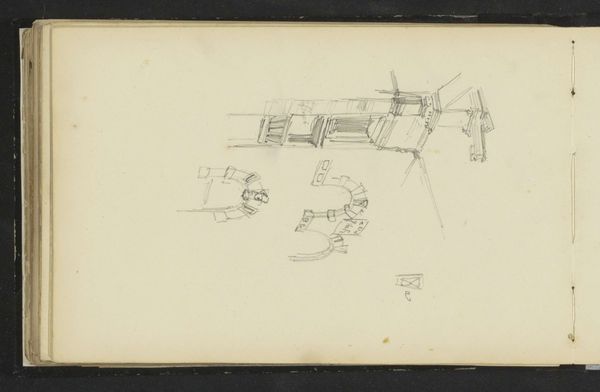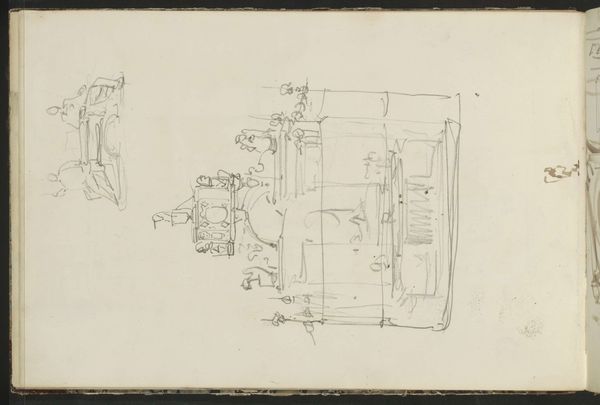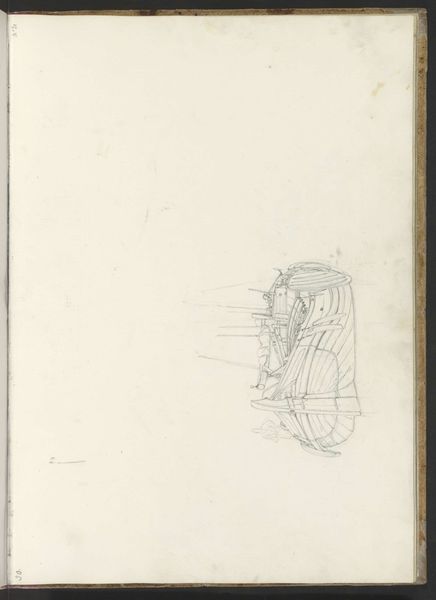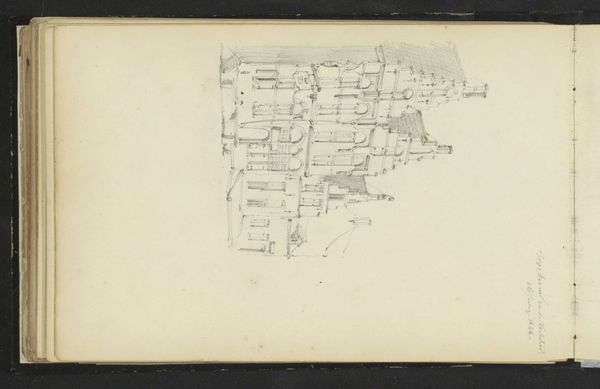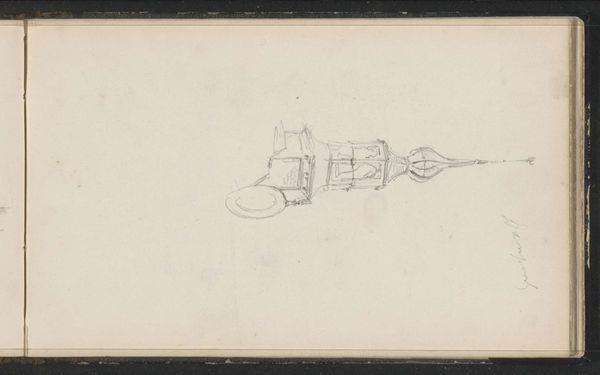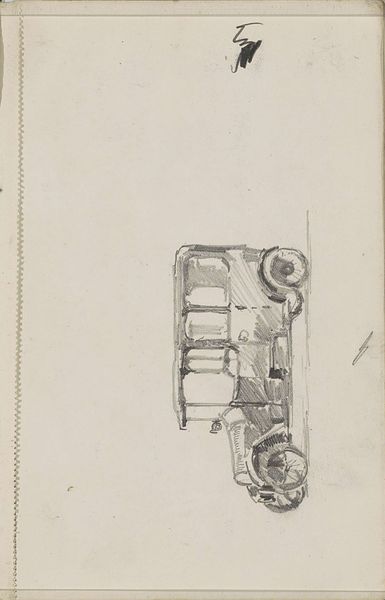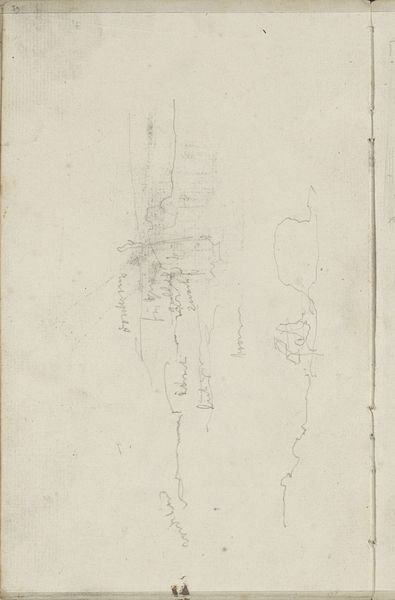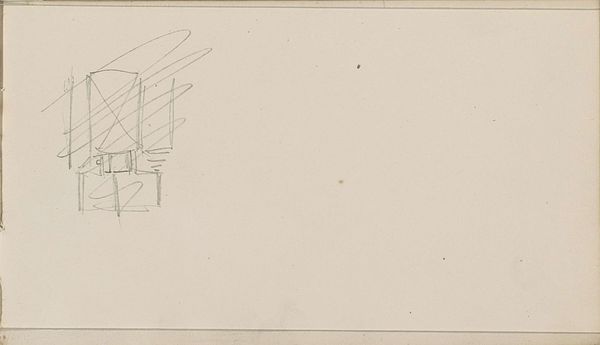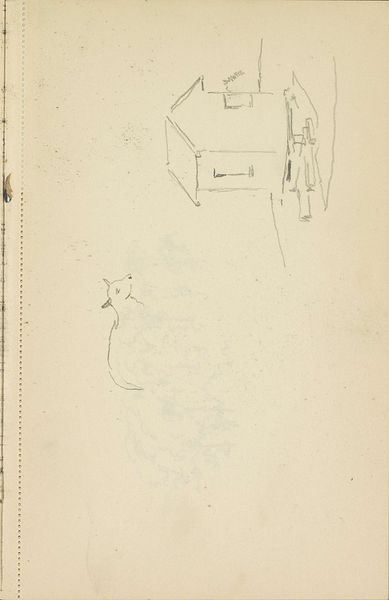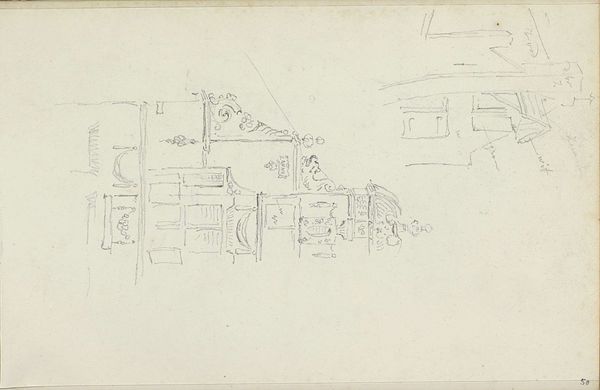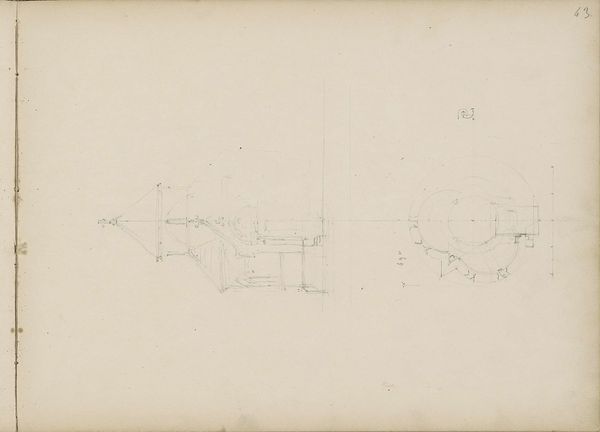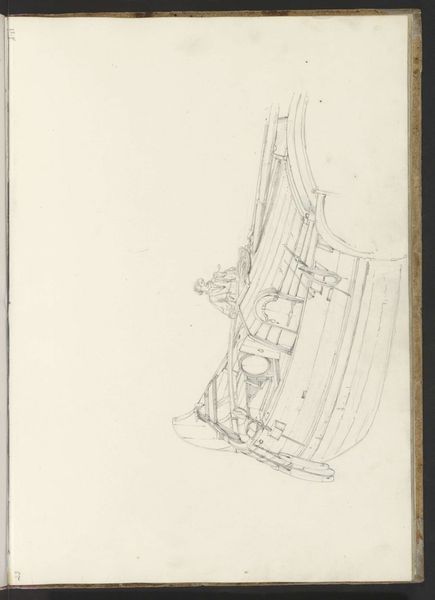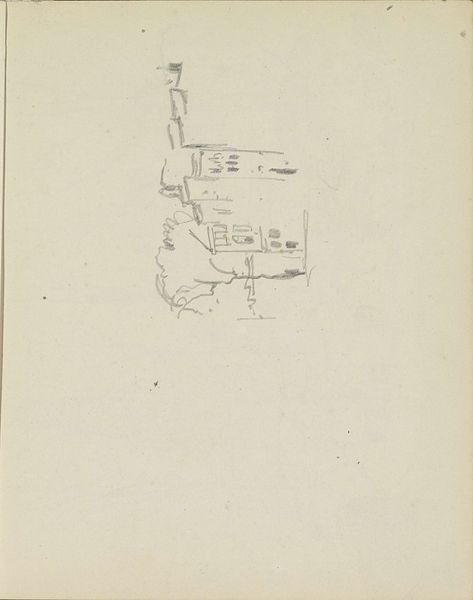
drawing, pencil
#
drawing
#
form
#
pencil
#
line
#
realism
Copyright: Rijks Museum: Open Domain
Curator: We are observing a pencil drawing by Cornelis Springer titled "Gezicht op vogels in Artis te Amsterdam," dating approximately from 1846 to 1882. The work currently resides in the Rijksmuseum. Editor: It’s like a ghost of a place, isn't it? So faint and skeletal, yet…it captures something, an atmosphere almost more than the solid shapes of the architecture itself. Curator: Precisely. The artist prioritizes line, reducing form to its essential structure. Note how the rendering privileges spatial relationships through simple vectors, foregoing details and emphasizing the relationships between volumes. Editor: You're right, it is fundamentally about relationships. The thin lines create an almost musical rhythm, a sense of delicate impermanence. It reminds me of trying to capture a melody I only half remember. What kind of ‘eye’ must the artist possess? Curator: Springer's emphasis here suggests a particular interest in the process of seeing. Through line, he privileges form, directing our gaze toward an interrogation of space rather than pictorial illusion. Editor: Hmm…so it is about visual experience, this negotiation between perception and rendering…I keep imagining being there, hearing the imagined sounds within the avian exhibit, the heat, the cacophony of birdcalls rendered strangely serene. The eye dances, connecting fragmented shapes until they cohere in the mind’s-eye. Curator: This reading resonates strongly with theories regarding incomplete form in modernist drawing. One might argue, then, that this image—created well before its theoretical framework was established—contains, implicitly, its anticipation. Editor: And that anticipation might stem from something much more instinctive. What the work offers is, a feeling of suspended becoming. That incompleteness leaves us with more; each viewer adds their own imagined architecture, a fusion of memory and dream. Curator: The merit is indeed that these spare vectors invoke potent structures; the line work constructs not only material form, but an index of perception. Editor: Indeed. And the fact that the work, while invoking rigorous form, also suggests ephemerality: That these skeletal representations also invoke a whole world with implied sounds and tactile realities is…remarkable.
Comments
No comments
Be the first to comment and join the conversation on the ultimate creative platform.
